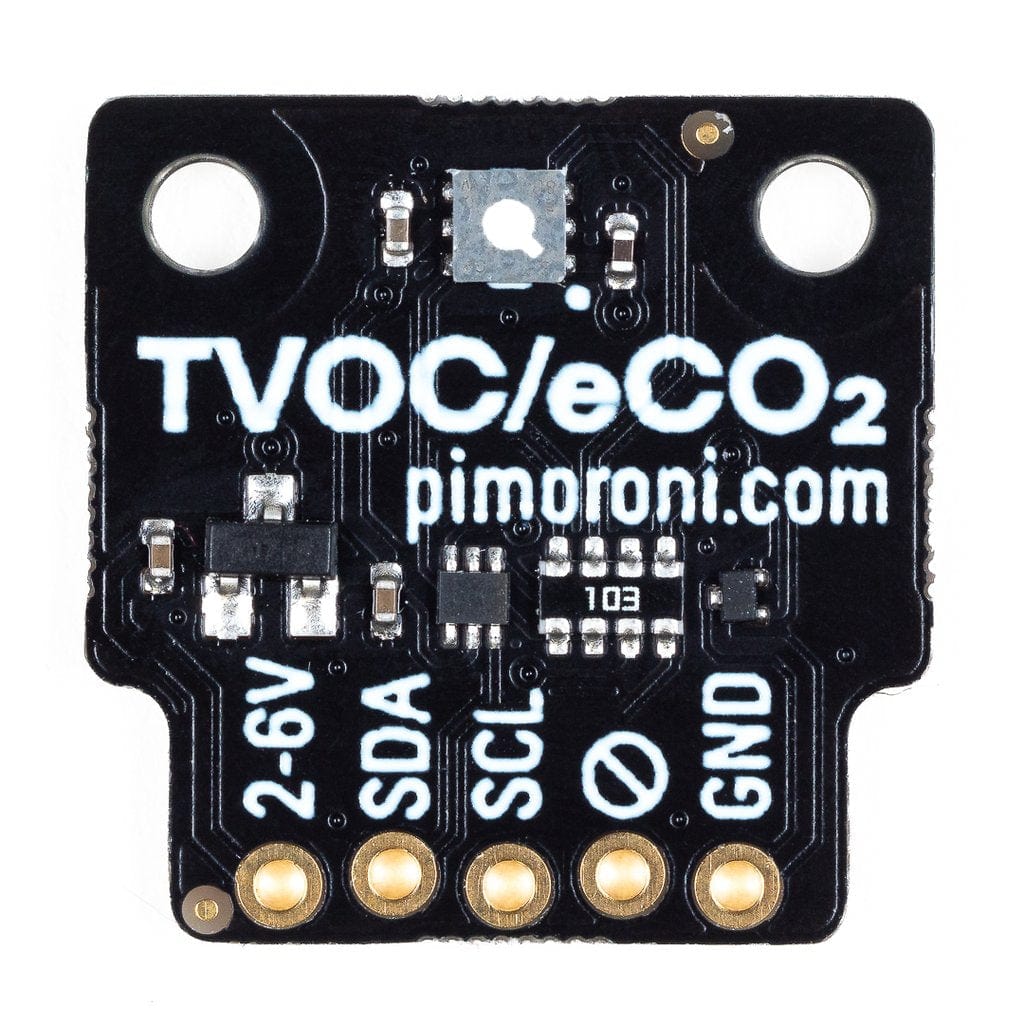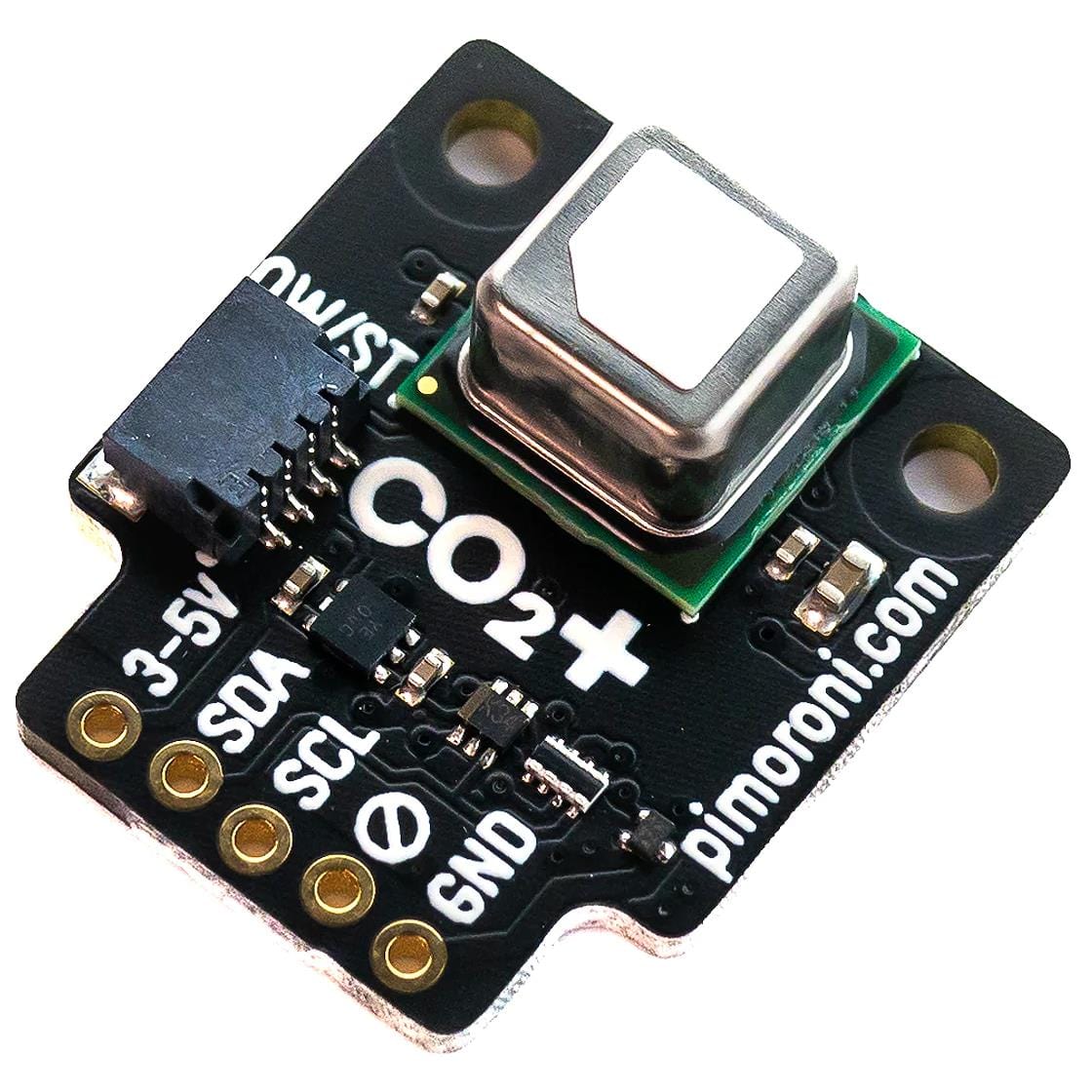




Login / Signup
Cart
Your cart is empty





A wireless environmental monitoring board to keep track of inside conditions in your home, office or another habitat with a Raspberry Pi Pico W built-in! The onboard sensors can measure temperature, humidity, pressure, gas and light.
The top-of-the-range BME688 sensor on Enviro Indoor can measure temperature/humidity/pressure with a high degree of precision, and the gas scanner will react to changes in volatile organic compounds (VOCs), volatile sulfur compounds (VSCs) and the presence of carbon monoxide and hydrogen to give a general measure of air quality. The BH1745 light sensor can tell you the luminance and colour of light, so you could use it to detect unrestful blue light or adjust your lighting's intensity/hue depending on the time of day.
Available as the board only or with an accessory kit including a USB cable, battery holder, batteries and velcro pads! Select the required version above before adding to cart.
Want to add more sensors to this board? A CO2 sensor breakout (plugged into the Qw/ST connector) would make a nice addition, so you could keep an eye on ventilation levels and cognition impairing carbon dioxide build-up.
Our new Enviro (Pico W Aboard) range is designed with environmental monitoring/logging in mind. We wanted to make a range of Pico/RP2040-powered, all-in-one sensor boards that are compact, easy to install in places and straightforward to program. The wireless capability of Raspberry Pi Pico W lets Enviro integrate with other systems - so you could post your data into databases, home automation systems, or online citizen science efforts - the Internet's your lobster!
Because the least fun thing about adding lots of sensors to your environment is figuring out how to supply power to everything without tons of trailing wires, they are all designed to work well off battery power. Each Enviro board has an onboard RTC (Real Time Clock) so that they can periodically wake up from deep sleep, take a reading (and, optionally, connect to wifi) and then go back to sleep - giving you months of untethered battery life.
We've also put together some handy accessory kits to go with this Enviro board, that includes an appropriately sized AA or AAA battery pack, a USB cable and other essentials so you can get going super quick.
Enviro ships with some super slick provisioning software that makes it really easy to set it up and connect to things, even if it's your first foray into environmental logging/IoT. Power it up and connect to the network called 'Enviro Indoor Setup' with your phone, tablet or other wi-fi enabled device - your Pico W will walk you through the rest!
The Qw/ST connectors on Enviro boards make it super easy to connect up I2C Qwiic or STEMMA QT breakouts. If your breakout has a QW/ST connector on board, you can plug it straight in with a JST-SH to JST-SH cable.
Breakout Garden breakouts that don't have a Qw/ST connector can be connected using a JST-SH to JST-SH cable plus a Qw/ST to Breakout Garden adaptor. Want to use multiple breakouts at the same time? Try this adaptor!
Our new Pico W Aboard products come with a built-in Raspberry Pi Pico W. This means you get all the advantages of an RP2040 microcontroller - a speedy fast dual-core ARM processor, a dynamic, growing ecosystem and a choice of different programming methods to experiment with. Most excitingly though, Pico W has wireless connectivity, so your Pico/RP2040 devices can communicate with each other, and the internet!
Wireless is very new to Pico/RP2040 - be aware that things will move fast and change! Software support (wireless examples, tutorials, CircuitPython support etc) will take a little while to catch up. If you're an absolute beginner to Pico/RP2040, you might have a better experience with wireless if you wait until everything is a little more settled.

















